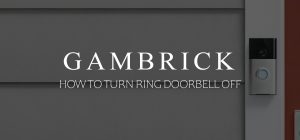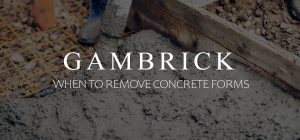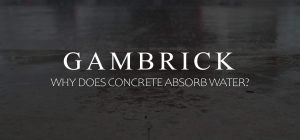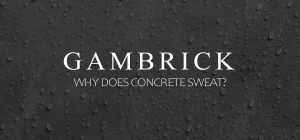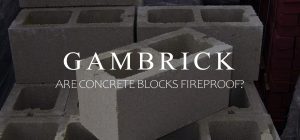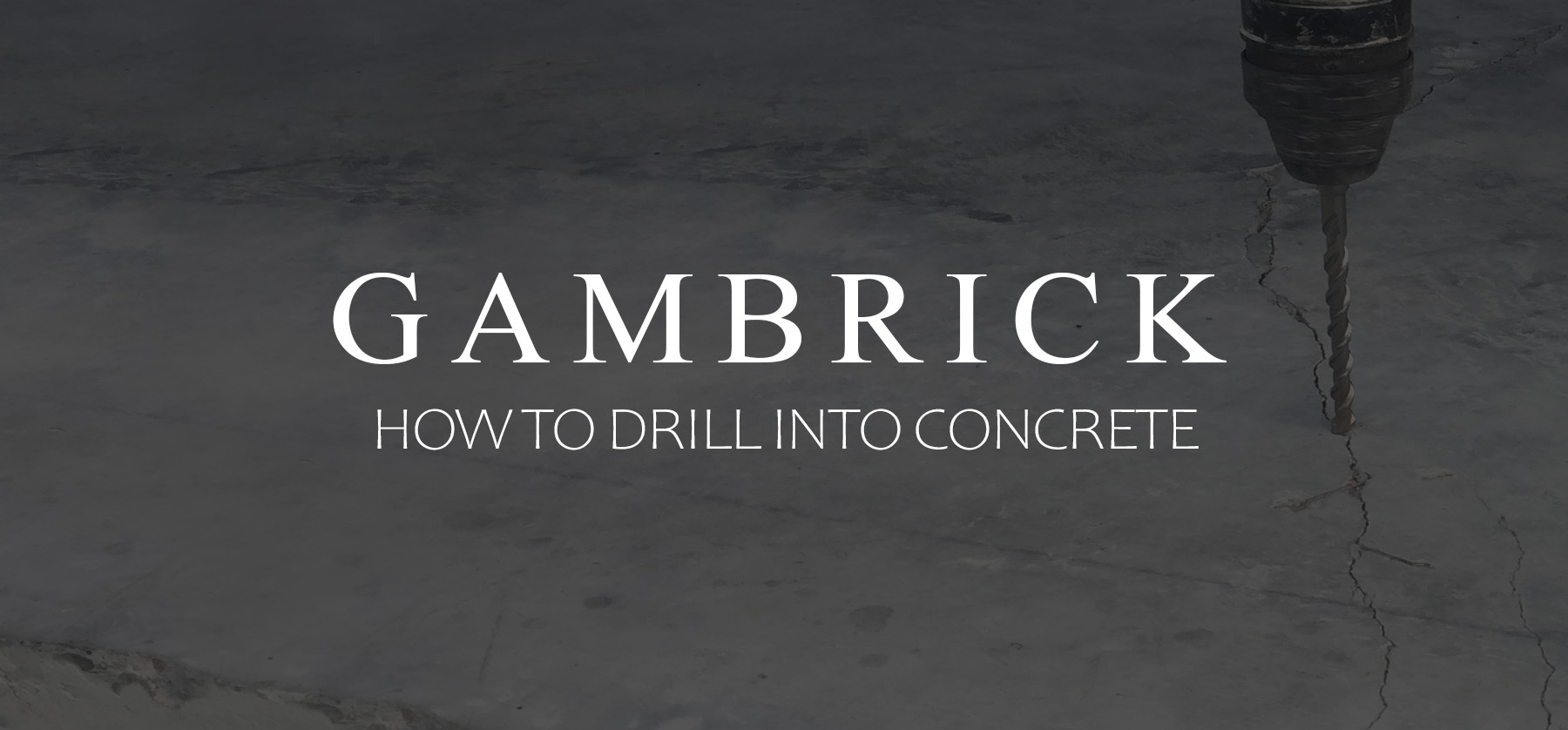
How To Drill Into Concrete
I’ve been a mason for over 25 years and can tell you firsthand that all you really need to drill into concrete is a good masonry bit and a power drill. Rotary hammers work best because they not only drill the bit into concrete, but also hammer it at the same time. Hammer drills are really good because they have a vibrating feature that helps the bit get through concrete. But a standard drill can do the job just fine. A masonry bit is what’s truly essential. Without a good bit, no matter what type of drill you use, you won’t drill through concrete.
When drilling into a concrete slab, if the bit hits cement and sand, it will go through easily. However, if it hits a stone you’ll have a much tougher time drilling through and may burn out your bit. Higher psi concrete has more stone, making it harder to drill into.
Keep lots of pressure on the bit and keep the drill at a steady angle. Trying to change angles once the bit has penetrated into the concrete can snap your bit or cause a crack. If a crack forms, use a concrete crack filler to make repairs after the hole is finished.
If you hit a stone, you’ll know because the drill will stop penetrating, back the bit out periodically and let it cool. Trying to drill through a stone in one attempt can burn out your bit.
If your bit gets red hot, use water to cool it down before trying to drill through the stone again.
Drilling into concrete is an important skill to learn when building or remodeling a home because you’ll likely have to install concrete anchors at some point, which requires drilling a pilot hole.
What You’ll Need
If you’re a DIYer or a Pro, chances are at some point you’ll need to know how to drill into concrete. Concrete is such a widely used building material in both residential and commercial construction that at some point your going to come in contact with it. And it’s being used more and more as a finish material for things like poured walls, interior floors and even countertops. Since it’s being used more often, there’s more need to learn how to work with it.
Drilling through concrete actually isn’t that hard if you have the right tools. All you need is a drill, a hammer drill or rotary hammer works best, and the right bit. A standard drill will work too but it has to have a certain amount of torque.
Let’s talk about each tool you’ll need in detail.
Best Drills For Concrete
The best drill for drilling into concrete is one of two tools: A hammer drill or a rotary hammer. They both do essentially the same thing but are different tools. A standard drill or screw gun will work on concrete too but they need to have plenty of torque.
Hammer Drill
A hammer drill has two main functions. It works just like a standard drill when the hammer function is turned off. But when you turn it on the drill vibrates as it twists. This vibration helps work the drill bit into the concrete.
A hammer drill is great for drilling smaller holes into concrete. Like a wall anchor for hanging a picture or shelf. For most residential concrete drilling, a hammer drill is the right tool. But for larger projects, like drilling lag bolts, you’ll want a rotary hammer.
Hammer drills are generally more expensive than an equal quality standard drill because of the added function.
Rotary Hammer
A rotary hammer works like a regular drill when the function is turned off. But when you turn it one it works like a jackhammer that twists: The bit reciprocates (travels back and forth in a linear fashion), which “hammers” the bit into the concrete. It’s also smoother to operate, drills faster, runs quieter and is a lot more powerful. Rotary hammers can drill large holes and even bore into concrete.
The main industry classification for rotary hammers tends to be by weight and chuck size. For example 5-pound, 10-pound, etc. The heavier a rotary hammer is the more powerful. Choose one that’s right for the type of work you do. Anything larger will be overkill and harder to work with. Rotary hammers can get quite heavy and bulky as their power and size increases.
For 99% of residential work, a rotary hammer around 5-pound with a ¾-inch chuck will do just about any concrete drilling you need.
Rotary hammers are typically more expensive than both standard drills and hammer drills. These are more heavy duty tools typically used by professionals like masons. But the smaller ones are great for residential work.
Regular Drill
For drilling small holes into concrete, a standard drill or even a screw gun can do the job. But they need to have a lot of torque. I wouldn’t recommend using a low power household tool because you could burn out the motor.
Standard drills are designed for drilling into metal or wood. They can drill into concrete too, if you have the right bit, but they need the power. I’ve drilled into concrete with a regular drill plenty of times but it’s harder and takes a bit more pressure.
Screw guns can do it too but again, you need a good tool with lots of torque.
I don’t recommend using a traditional drill or screw gun unless the hole your drilling is really small. For larger holes, they probably won’t have the power and you may burn out the motor.
If you try it, take your time and drill in just a little bit at a time. Don’t try and drill right in all at once like you would with a rotary hammer.
Tips
Here are a few tips to keep in mind when using a traditional drill.
- If you have to drill a large diameter holes, start with a small hole first and work your way up. A standard drill won’t have the power to drill a large hole in one try. This requires a bunch of drill bits but it’ll make life easier.
- Drill in a little at a time. Don;t try and drill the entire depth all at once like you can with a rotary hammer. Try a quarter inch at a time, back out and let the bit cool, also blow out the concrete dust as you go. A clean hole with a cool bit will require less torque.
- Keep the bit cool. Masonry bits designed for a standard drill aren’t as heavy duty as hammer drill or rotary hammer bits. They tend to burn out much faster which can get expensive.
- Buy multiple bits. If you hit a stone your bit can easily burn out. Have a spare or two on hand.
- Carry a masonry nail with you. If you hit a stone, back out the drill bit and bang in the nail. Breaking the stone will make it much easier to drill through on your next attempt. This technique will save you a lot of money on bits.
Best Concrete Drill Bit
The right drill bit is essential for drilling into concrete. Without the right bit you’ll barely break the surface. Concrete is a very dense material, especially when it’s structural concrete with a high psi. In some cases you may even have to drill through stone aggregates.
One thing you’ll notice with almost every style concrete bit is that they look different than wood or metal bits. The head is flatter because it’s designed to chip and pulverize the concrete as it drills into it. With a metal or wood drill bit, you get shaving of material as you drill in. With a concrete bit, you get powder. The bit breaks up the concrete as it drills in, it doesn’t cut it. This requires a very strong bit with a reinforced head, often times coated with diamond dust.
Masonry Bits
At the very least, you should buy a masonry bit that states it’s for drilling into concrete. Bits designed for wood or metal won’t due. But even masonry bits are the minimum and really only good for smaller sized holes. In general a masonry bit will be enough for most residential projects like hanging pictures. I like to buy bits with a diamond coating. If you look closely at the bit you’ll see a shiny powder covering the bit. That’s the diamond dust. It’s very hard and helps get through the concrete.
Masonry bits have a wide, gently sloped head that’s designed to chip away at concrete rather than screw into it like a wood bit does. The tip of a masonry bit is hard metal that can withstand more heat and pressure.
These bits are not the best quality and generally don’t last very long. Most of the time I’m only able to drill a few holes with a bit before it burns out from the heat. To make them last longer I recommend you drill slowly. Don’t try and do it all in one shot like you can with a rotary hammer. They have more power and much better bits.
Hammer Drill Bits
Hammer drill bits look just like typical twist drill bits except they have an arrowhead of carbide at the tip and a tighter fluting. These bits are designed to work when the hammer drill vibrates. They not only screw into the concrete but also break it up as they go.
The bits are better quality than a standard masonry bit and last a bit longer. They have a similarly shaped head that’s meany to chip away at concrete as it screws in. The vibration turns concrete into a powder. Back the bit out and then put it back in as you go to release the powder. This releases some pressure which makes the bit last longer. It also gives the bit a chance to cool.
Rotary Hammer Bits
Rotary hammers use a bit called a SDS. It stands for Slotted Drive System. SDS bits feature a thick bit end and grooves in which the bit travels. They’re more expensive and last longer than hammer drill bits. The slots allow some movement as the drill hammers and turns the bit into the concrete. These are made much better than a traditional masonry bit and can last for years. Although they’re more expensive.
Rotary hammer bits are a beast. If you have a good drill and bit you can blast right through most concrete in a single try. Occasionally it can get hard if you hit stone aggregate because they’re much denser than cement, but the rotary hammer can chew right through it.
To make your bits last longer, let them cool as you go. There a lot of heat and pressure inside that hole as you drill. Even though the bits are designed to withstand it, it’s still a good idea to let them cool a bit before going from hole to hole. This little bit of extra care will make your bits last longer which is a good thing because rotary hammer bits are expensive.
Other Tools
There are a few other tools that don’t actually help drill the hole, but make the job a bit easier.
Tape and a pencil: Drilling into concrete is permanent so you want to be sure and drill in exactly the right place. Mark the area with tape and a pencil before drilling.
Masonry dust mask: Concrete drilling creates a lot of dust which can be bad for your health if you breath it in. I recommend wearing a mask that’s designed to filter out very fine particles.
Safety glasses: Concrete dust can also be bad for your eyes. Protective gear is always a good idea whenever you do any type of construction work.
Ear protection: Drilling into concrete can be very loud. Especially if your in a basement or crawl space where sound can echo. Wearing ear protection will help prevent hearing loss. It’s not that uncommon in the construction industry.
Masonry Nail or chisel: These can come in hand for two reason. If you run into a really dense stone the nail or chisel can crack it. It’s better to break it then to chew down an expensive bit. Nails and chisels are great for making a starter hole too.
Compressed air: This is helpful for cleaning concrete dust out of your hole before you install the anchor or bolt.
Vacuum cleaner: When you drill into concrete, dust is going to get everywhere. Concrete drills pulverize the concrete and turn it back into a fine dust.
Step By Step
OK, you’ve got the drill ready and your bits picked out along with some additional supplies and safety equipment, now what. Listed below are step by step instruction on how to drill through concrete.
1. Mark The Spot You Want To Drill
Once you take all your measurements and find the spot you want to drill, cover it with masking tape and mark it with a pencil. Drilling into concrete is permanent so you don;t want to drill in the wrong spot.
Once you’ve marked the wall, you should also figure out how deep of a hole you want to make. I like to mark that depth on my bit with a marker or piece of tape. Drilling any deeper then you need is a waste of work.
2. Make A Pilot Hole
I like to a pilot hole with either a very small drill bit or a concrete nail before I start drilling the actual hole. This makes life a little easier.
If I’m using a traditional drill then I drill my pilot hole the entire depth. I increase the drill bit diameter as I go. Sometimes I actually drill the same hole 3-4 times using wider bits every time. Doing this makes it much easier if I have an under powered drill.
If I’m using hammer drill or rotary hammer than the pilot hole just keeps my bit in the right spot as I drill.
3. Start Drilling
Apply pressure until you reach the required depth. It’s best to take your time and maintain control.
Drilling into concrete can take a bit of effort or the bit will easily go right through. It all depend on the makeup of the concrete. If your just drilling into cement the job will be much easier. But if you hit lots of stones then it takes more time.
Stones are much denser than concrete and need more pressure. Take your time. Drill a little at a time. Back the drill bit out and let it cool occasionally. If you keep pressing into a stone you can easily burn the tip of your bit.
Crack the stone with a masonry nail or chisel if you can’t get through. This will make drilling through it much easier.
4. If You Hit A Stone Use A Masonry Nail Or Chisel
If your drill suddenly stops progressing, that usually means you’ve hit a stone. this happens, you need to stop drilling. Back the drill out and crack the stone with a masonry nail or chisel.
This is generally not an issue with a rotary hammer since the drills function is always hammering into the concrete. The drill will hammer and crack whatever is in its way for you.
Sometimes it’s an issue with hammer drills. Since these drills only vibrate, they can occasionally get stuck on a stone.
Traditional drills run into stone issues all the time. They don’t have an additional function to get them through so you’ll have to do it manually.
5. Clean Out The Hole
Once you’ve reached the required depth, use some compressed air to blow all of the dust out of the hole. Don’t bang in your anchors while the hole is filled with concrete dust because it will obstruct the anchor.
You can also blow out dust as you go. Concrete dust inside the hole can bind up the drill bit and increase heat. If you having trouble drilling through then take a minute, blow out the hole and let the bit cool down.
Blowing out the dust, installing your anchors and cleaning up are the final steps.
Tips For Drilling Into Concrete
Here is a brief summary and tips that can help you drill into concrete.
- Choose the right drill bit. You’ll need a masonry bit at the very least. If your using a hammer drill or rotary hammer, use the appropriate bit for your drill function.
- Choose the right drill. For small holes a standard drill will work but a hammer drill is better. But for larger holes a mason needs to make, like anchor bolts, a rotary hammer is a great tool to have.
- Use the right pressure. If it’s hard to drill into concrete, that doesn’t necessarily mean push harder. Your bit could be no good or you may have hit a stone. Simply pushing harder can just burn out the motor in your drill.
- Use Water. Wetting the concrete before you drill can cut down on dust and help cool the bit. We don’t usually do this for small holes but it’s common for large ones.
- Keep the hole clean. You may need to remove some dust as you drill Back the bit out and use compressed air to blow out the hole. If you don’t have the air then move the bit in and out of the hole while spinning the drill, without pressure, just to get the dust out.
- Be prepared for jams. If you’re drilling into a concrete foundation or wall, you might hit something that’s not concrete, such as rebar or aggregate stone. If it happens, remove the bit and use a concrete nail to break apart whats in your way. A nail won’t help if you hit rebar, in this case you’ll have to move the hole.
- Safety first. Wear safety goggles and a dust mask to keep debris out of your eyes, nose, and mouth when drilling holes in concrete. Gloves aren’t a bad idea either.
- Let the tool do the work. Pressing harder isn’t always better. You need enough pressure to help the drill and bit do their thing. But too much pressure will just stress the motor.
Summary: How To Drill Into Concrete
I’ve been a mason for over 25 years and can tell you firsthand that all you really need to drill into concrete is a good masonry bit and a power drill. Rotary hammers work best because they not only drill the bit into concrete, but also hammer it at the same time. Hammer drills are really good because they have a vibrating feature that helps the bit get through concrete. But a standard drill can do the job just fine. A masonry bit is what’s truly essential. Without a good bit, no matter what type of drill you use, you won’t drill through concrete.
When drilling into a concrete slab, if the bit hits cement and sand, it will go through easily. However, if it hits a stone you’ll have a much tougher time drilling through and may burn out your bit. Higher psi concrete has more stone, making it harder to drill into.
Keep lots of pressure on the bit and keep the drill at a steady angle. Trying to change angles once the bit has penetrated into the concrete can snap your bit or cause a crack. If a crack forms, use a concrete crack filler to make repairs.
If you hit a stone, you’ll know because the drill will stop penetrating, back the bit out periodically and let it cool. Trying to drill through a stone in one attempt can burn out your bit.
If your bit gets red hot, use water to cool it down before trying to drill through the stone again.
Drilling into concrete is an important skill to learn when building or remodeling a home because you’ll likely have to install concrete anchors at some point, which requires drilling a pilot hole.
If you have any questions or comments e-mail us any time.

John Mazzuca | About | More Posts |
Custom Home Builder
John Mazzuca is a custom home designer and builder at Gambrick with over 25 years experience in the construction industry. John has designed, built and/or remodeled hundreds of homes, small buildings, and commercial projects. He writes about business, real estate, home building, and household electronics. His work has been featured in Fox Business, Better Homes & Garden, House Beautiful, and more.




